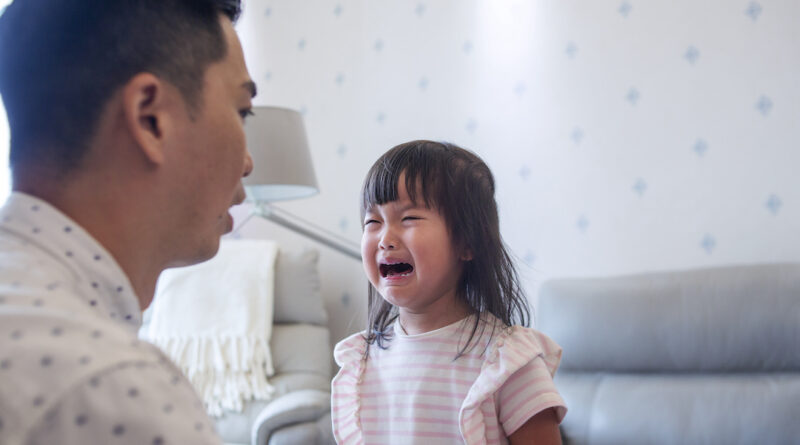Are time-outs toxic?

David Rettew is a child and adolescent psychiatrist and associate professor of psychiatry and paediatrics at the University of Vermont Larner College of Medicine. His new book, Parenting Made Complicated: What Science Really Knows about the Greatest Debates of Early Childhood, was released this year.
Your four-year-old son has just thrown a block at his little sister for taking one of his toys. She’s crying, he’s yelling, and you’re right in the middle with a decision to make.
Now what?
For years, parents have turned to the time-out as the appropriate response. The child is told to sit in a chair or go to his room for about four minutes (one minute per year of age) before there is a brief discussion about what happened and how to improve next time. Then all is forgiven.
Lately, however, the time-out has come under fire for being too harsh. This development seems a bit ironic to a lot of parents who, after all, chose the time-out as an alternative to harsher forms of discipline like spanking. But an increasing cadre of experts now advocate for “time-ins” when a child misbehaves—especially if it involves a child becoming dysregulated (which means getting really upset with crying, yelling, body shaking and, for some, aggressive and destructive actions). With a time-in, the parent actively engages and soothes the child before having that same debriefing talk rather than chastising them for the behavior and leaving them to cool down on their own. The process involves suspending judgement for how ridiculous the trigger for the meltdown often seems (perhaps the blue cup is in the dishwasher and only the yellow one is available, for example) and reframing the negative behaviour: maybe it’s not a child’s deliberate strategy to manipulate you, but instead, it’s their developmentally young brain getting overwhelmed. They really are doing their best.
For the well-meaning parent looking for a consistent and evidence-based game plan to these challenging situations, these opposing strategies can be quite confusing. Time-out or “time-in?” Ignore or engage? Punish or move on?
When it comes to harms associated with time-outs, there has been some high-profile criticism of the technique, suggesting that it may result in developmental “damage.” When you read the fine print about the actual scientific evidence for this, however, you find that this argument is quite shaky. Time-outs have been a standard component of many evidence-based treatments for decades in helping kids with oppositional and defiant behavior, and when time-outs are used correctly, there is little research to suggest that they have negative effects on brain development.
As for the effectiveness of time-outs versus time-ins, much of the confusion comes with the way these approaches are marketed, which is that a parent needs to choose one technique or another and apply it universally to all kids, all of the time. The problem with this, as most parents know, is that an approach that works amazingly well with one child can fail spectacularly with the next.
But acknowledging this diversity doesn’t mean that our parenting style has to descend into randomness and anarchy if we consider some important principles. In my latest book, Parenting Made Complicated: What Science Really Knows about the Greatest Debates of Early Childhood, one of the key themes is that science often doesn’t have a “correct” one-size-fits-all-solution to many of the most debated topics in parenting. Rather, the best path should be based on factors like a child’s temperament and cognitive level.
Time-outs require a couple things to be effective. First, the child needs to have some degree of control over their behaviour so that the unpleasant aspects of the time-out serve as a deterrent for the next similar situation. Time-outs work on motivation, but all the motivation in the world doesn’t help if the child really can’t control their emotions or behaviour in the first place.
Second, time-outs can be quite effective when a child is misbehaving out of an attempt to get attention because it teaches the child that this “ploy” won’t work, and that attention instead will be withheld when he acts this way. But if attention-seeking isn’t what is driving the misbehaviour to begin with—maybe they really are just having a rough time—then a key assumption for why you’re using time-outs doesn’t apply.
The reality, of course, is that some kids really don’t have the skills to regulate themselves when they get upset, while others do like to test limits and see what they can get away with, with a more mischievous intent. Making matters even more complicated is the fact that the same kid may be in different modes at different moments in the day.
But we can handle this as parents by replacing some of our knee-jerk reactions (“OMG, my kid is acting like a spoiled brat! I can’t reward him with a hug for this!”) with more observation and testing of various approaches with our own individual child.
I don’t believe in the uncritical acceptance of discipline advice from one self-proclaimed parenting expert—it really depends on so many factors. So, instead, Step 1 may be thinking a bit more about your child’s temperament and hypothesizing what might be going on when your child engages in negative behaviour. You could even ask your child about this when he is in a good space. (“It seems like you were frustrated this morning during computer school. Is that why you slammed the laptop shut and threw your pencil? What was frustrating you?”) Because then Step 2 is to give your approach a go for a while—consistency is the goal—but monitor to see if what you are doing is actually working. Is offering hugs and “time-ins” after these meltdowns working? Are you seeing less frequent and less intense meltdowns, or fewer blocks being thrown across the room?
Maybe, for example, you decide on a hybrid approach for your five-year-old daughter in which you respond differently for different types of negative behaviour. When she absolutely loses it over having her iPad turned off when screen time is over, you are going to assume she really can’t do better and will try to coach her down in a warm and sympathetic way. If that doesn’t help, you might even encourage her to spend a few minutes in her room to calm down, but here the suggestion is not being used as time-out, per se, but rather as a technique to help her become regulated again.
Later that day, however, maybe with the same kid you really do use a time-out after she, for example, walks up and punches you in the arm, because you have assessed that in this moment, she actually isn’t doing her best, and needs some incentives to behave better.
After some time, the final step then is to make some tweaks and adjustments to your plan if needed and then repeat the process.
Yes, when put this way it all sounds fairly logical and straightforward, but it is amazing how easily some of our instinctual knowledge and common sense can fly out the window when we are in full, emotional-reactive mode as parents (super common when you’re already stressed), or when we’re trying to follow, somewhat dogmatically, that online training guide that you bought from someone who hasn’t even met your kid. It’s just not going to work for every single discipline scenario that may come up.
Kids are indeed different—your friend’s kids won’t necessarily behave like yours, and it’s not necessarily something you’re doing wrong or right. Even siblings within the same family may need individualized approaches. Parenting is indeed complicated. But fortunately, there are a couple things in our favour. First, we are not contractually obligated to blindly follow oversimplified recipes about parenting just because some online influencer tells us to. Second, perfection in parenting is neither possible, nor ideal—and that’s OK.
The post Are time-outs toxic? appeared first on Today's Parent.




